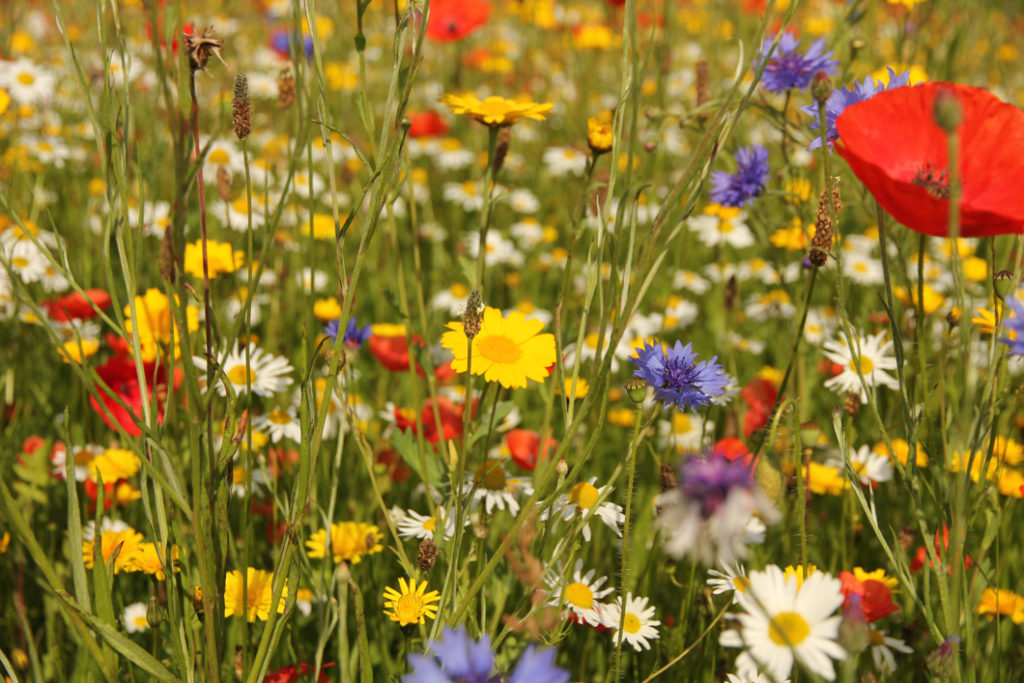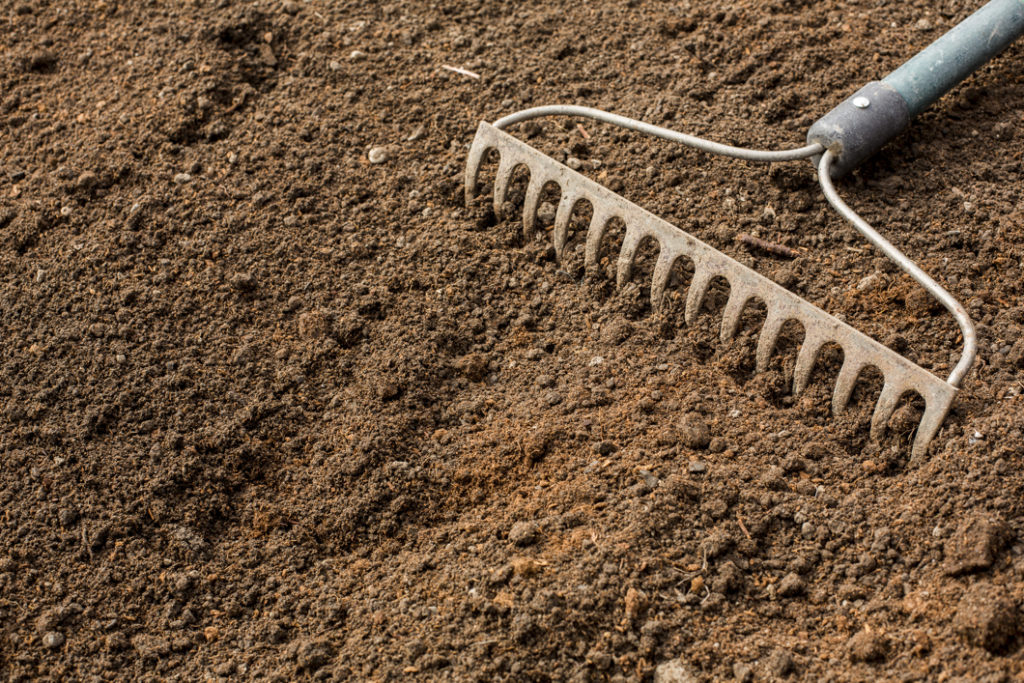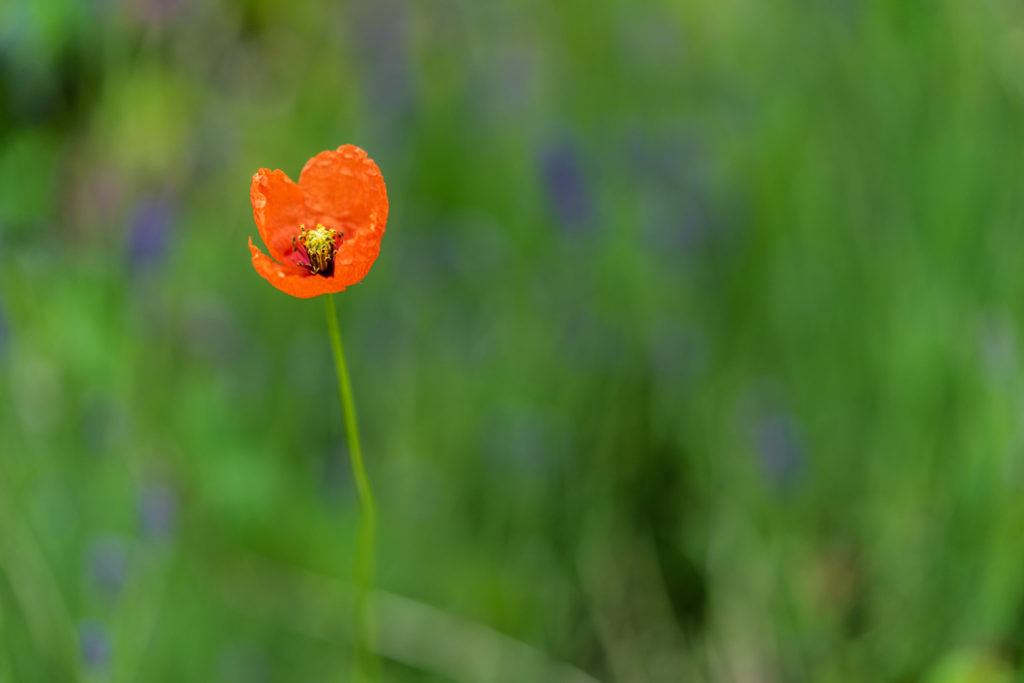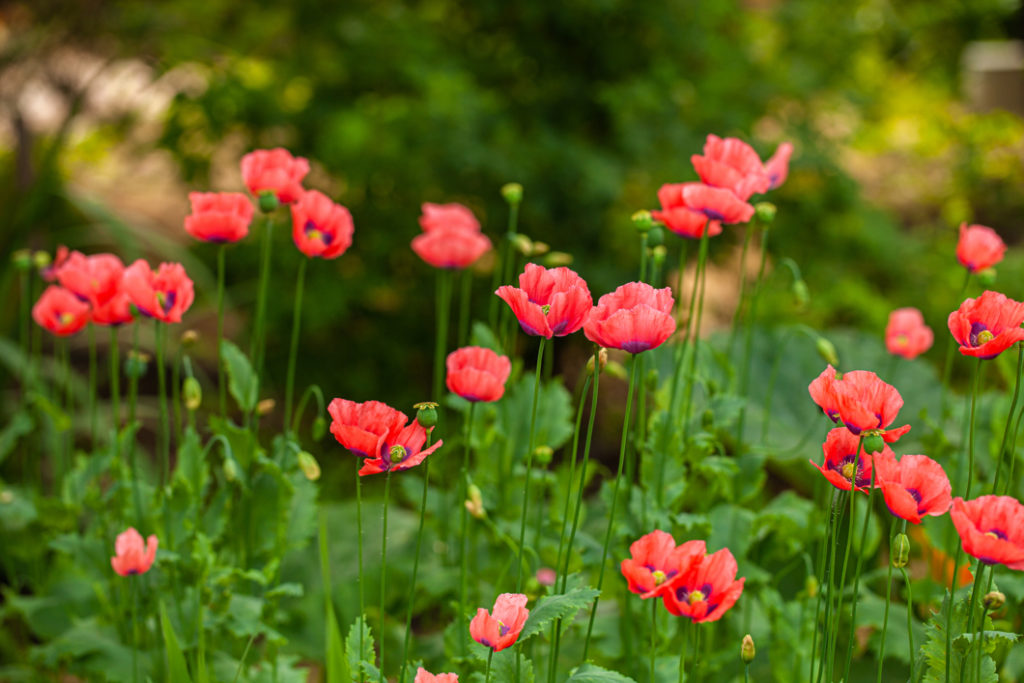Poppy Plant Care Needn’t Be An Exact Science, But These Tips Can Help Them Thrive

ANNUALS > POPPY

Elizabeth is a Permaculture Garden Designer, Sustainability Consultant and Professional Writer, working as an advocate for positive change. She graduated from the University of St. Andrews with an MA in English and Philosophy and obtained a Diploma in Applied Permaculture Design from the Permaculture Association.
Reviewed By COLIN SKELLY

Colin is a Horticulturist and Horticultural Consultant with experience in a range of practical and managerial roles across heritage, commercial and public horticulture. He holds the Royal Horticultural Society’s Master of Horticulture award and has a particular interest in horticultural ecology and naturalistic planting for habitat and climate resilience.
IN THIS GUIDE
POPPY GUIDES
There are many different poppy species, but in this article, we focus on the remembrance poppy, or common poppy: Papaver rhoeas.
The common poppy is a wonderful annual flower to consider growing in your garden.
Though its blooms are fleeting, they are wonderful for pollinators and are a great choice for wildlife gardens and annual wildflower meadows.
In this guide, you will learn how to grow these flowers on your own property and will be able to enjoy plenty of their cheerful blooms.
Overview
| Botanical Name | Papaver rhoeas |
| Common Name(s) | Poppies |
| Plant Type | Annual |
| Native Area | Africa, Asia and Europe |
| Hardiness Rating | H7 |
| Foliage | Deciduous |
| Flowers | Red |
| When To Plant | March-June |
Sunlight
Preferred
Full Sun
Exposure
Exposed or sheltered
Size
Height
0.5 – 1M
Spread
0.1 – 0.5M
Bloom Time
Summer
Soil
Preferred
Chalk, loam or sand
Moisture
Well-drained
pH
Any
The common poppy, also known as the red poppy or Flanders poppy and by a range of other local names, is a hardy annual flower.
It was extremely common in cornfields and around farms before the advent of herbicides and the use of agricultural chemicals.1Leech, C. (2015, August 18). A Flower to Remember. The Metropolitan Museum of Art. Retrieved March 23, 2023, from https://www.metmuseum.org/blogs/in-season/2015/a-flower-to-remember
It is still moderately common across much of the British Isles and is found in the wild and in many gardens.
Poppies of this type are a common addition in wildflower mixes for annual meadow schemes or wildlife gardens.

The poppy is well known as a symbol of remembrance for fallen soldiers, as poppies proliferated on the battlefields of the First World War.2Pruitt, S. (2020, May 21). The WWI Origins of the Poppy as a Remembrance Symbol. HISTORY. Retrieved March 23, 2023, from https://www.history.com/news/world-war-i-poppy-remembrance-symbol-veterans-day
The famous First World War poem ‘In Flanders Fields’ cemented this connotation by poignantly describing the poppies growing over the graves.3In Flanders Field. (2021, January 18). The Royal British Legion. Retrieved March 23, 2023, from https://www.britishlegion.org.uk/get-involved/remembrance/about-remembrance/in-flanders-field
Of course, poppies are also worn on Remembrance Day in the UK.4Why We Wear Poppies On Remembrance Day. (n.d.). Imperial War Museums. Retrieved March 23, 2023, from https://www.iwm.org.uk/history/why-we-wear-poppies-on-remembrance-day
How To Grow Poppies
Common poppies are very easy to grow.
Poppy seeds are usually best sown between March and May, depending on location, and are best direct sown where they are to grow.

They can also be direct sown in early summer or in autumn when they are to bloom.
Planting
The most important things to remember when choosing where to plant poppies are sunlight and soil.
As long as their environmental requirements are met, they should thrive and can self-seed readily if given the opportunity.
Poppies are wonderful in many different types and styles of garden.

They can easily be sown as part of an annual wildflower meadow, incorporated among other flowering plants in an informal border, or even among herbaceous perennials in a more formal border scheme or a cut flower garden.
Poppies work wonderfully well alongside Centaurea cyanus, Centranthus ruber, Achillea millefolium and Anthriscus sylvestris, as well as in schemes with meadow or ornamental grasses.
Depth & Spacing
Papaver rhoeas and other annual and biennial poppies seeds are usually simply scattered over the top of well-prepared soil.

The seed does not need to be covered over and broadcasting will usually achieve a good spread.
Container Growing
Poppies can also be grown in containers, either on their own or with other annuals to create beautiful and wildlife-friendly summer displays in a small garden.
If you do not have much space in your garden, planting up some mini meadow containers could be a great idea.
Plant Care
Poppies do not require a lot of ongoing care – the key is to choose the right spot to grow them in the first place.
Soil Requirements
Field poppies require sand, loam or chalky soil which is free-draining or a potting mix which provides suitably free-draining conditions.

These plants are unfussy about soil pH.
Before broadcasting the seeds, the growing area should ideally be prepared by raking to a fine tilth.
Preferred Aspect
Field poppies can be grown in a location with any aspect, as long as they are in full sun.
Some other poppies cope with or prefer partial shade, so make sure you are well aware of the needs of the particular poppies you would like to grow.
Watering
Spray the raked soil with water before sowing the seeds, and give the area water if it is particularly dry for a prolonged period.

Usually, however, rainfall will be sufficient and field poppies will not require any additional care.
Fertilising
Field poppies do not need any fertilisation and should thrive in most soils without any additional input from you.
Common Pests & Diseases
Poppies are not usually troubled by a wide range of pests and diseases, though they can sometimes be troubled by aphids.
These are easy to keep in check through planting, which attracts predators, like ladybirds and lacewings, to keep their numbers down.

Mildew can occasionally take hold, though this is rarely a serious issue.
Pluck and destroy any seriously infected material to reduce its spread.
Collecting Poppy Seeds
Collecting poppy seeds is very easy, so once you have some poppies growing, it will be easy to propagate and grow more.
You might not need to collect the seeds at all, since they proliferate through self-seeding when happy in a certain location.

However, if you would like to collect seeds to sow elsewhere, you simply need to wait for the seed heads to form.
Then, just as they open and before they disperse the seeds, you can collect them, place them in a paper bag, and then transfer the seeds to an envelope for storage.
Propagation
Poppies are propagated by seed, as mentioned above, or can simply be left to self-seed, and will frequently naturalise so even though they are an annual, they can continue to pop up in your garden over a number of years.

Poppy seeds can remain dormant in the soil and still remain viable many years later.
Resowing With Other Annual Meadow Plants
If field poppies fail to flower, this may be because the soil is too fertile or too damp.
There may be an excess of nitrogen which encourages leafy growth at the expense of flowers.
If you sow field poppies as part of a wildflower mix and they fail to come up the following year, this may be because they have been outcompeted by other species.

It may be necessary to resow annual meadow seeds over a few years until a natural balance is established.
“Papaver rhoeas thrives in disturbed environments such as agricultural fields where annual ploughing brings seeds to the surface and creates bare soil for them to germinate, grow quickly, flower and set seed,” says Master Horticulturist Colin Skelly.
“If the ground is disturbed again, the poppy seed in the ground will again repeat the cycle. However, if the ground is left to grow then perennial plants will take over and the annual poppies will decline until the ground is disturbed again.
“If you want annual poppies in your meadow every year then you need to create some bare ground every year to either allow a seed bank to germinate or sow some fresh seed.”
References
- 1Leech, C. (2015, August 18). A Flower to Remember. The Metropolitan Museum of Art. Retrieved March 23, 2023, from https://www.metmuseum.org/blogs/in-season/2015/a-flower-to-remember
- 2Pruitt, S. (2020, May 21). The WWI Origins of the Poppy as a Remembrance Symbol. HISTORY. Retrieved March 23, 2023, from https://www.history.com/news/world-war-i-poppy-remembrance-symbol-veterans-day
- 3In Flanders Field. (2021, January 18). The Royal British Legion. Retrieved March 23, 2023, from https://www.britishlegion.org.uk/get-involved/remembrance/about-remembrance/in-flanders-field
- 4Why We Wear Poppies On Remembrance Day. (n.d.). Imperial War Museums. Retrieved March 23, 2023, from https://www.iwm.org.uk/history/why-we-wear-poppies-on-remembrance-day
